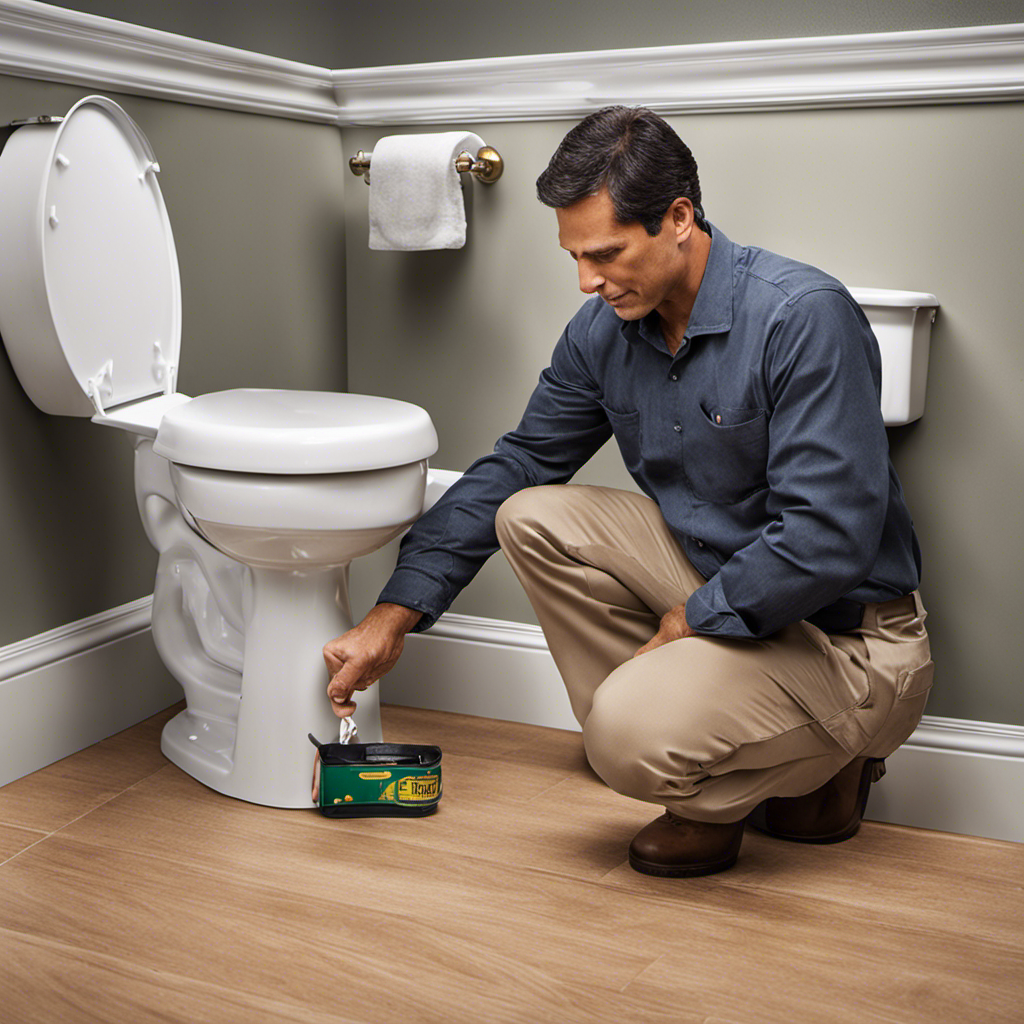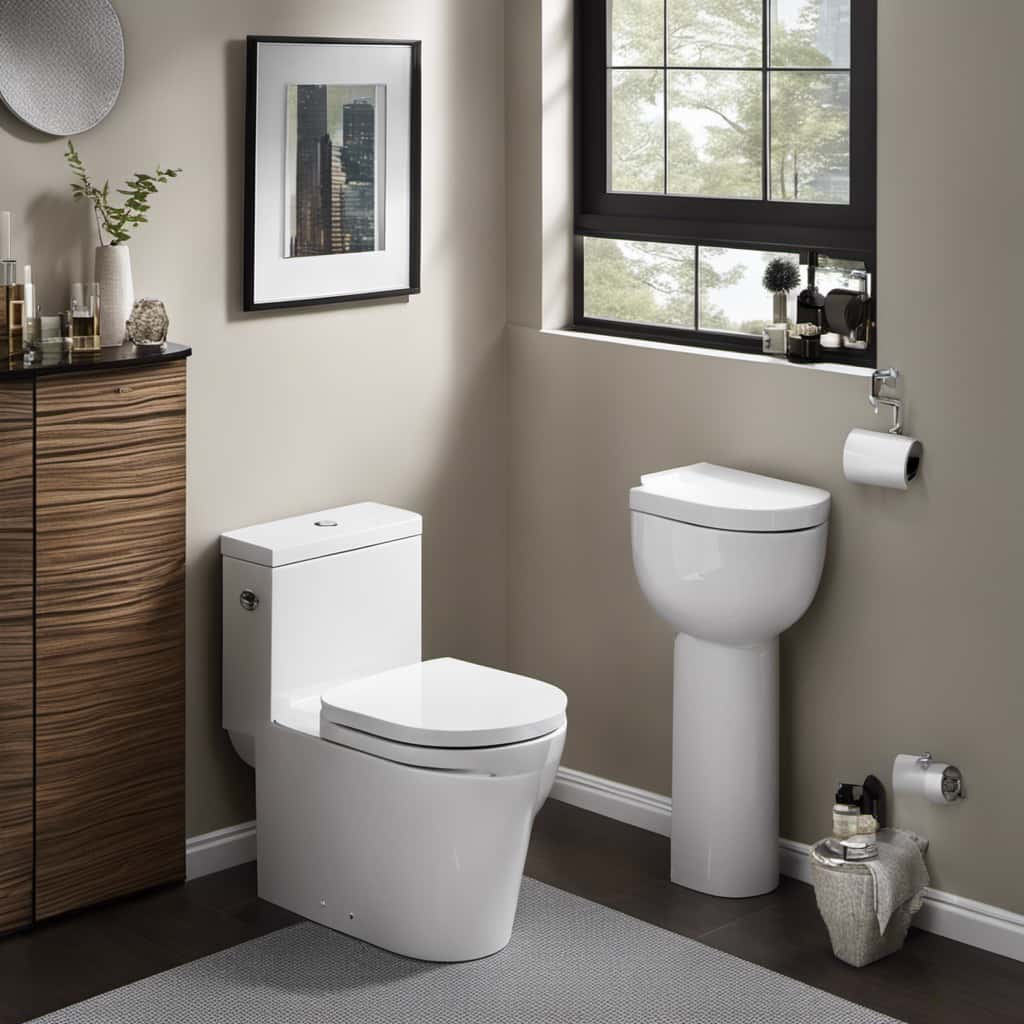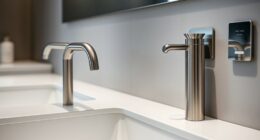We’ve all been there – the dreaded clogged toilet. It’s a situation that no one wants to deal with, but choosing the right type of flush can make all the difference.
In this article, we’ll explore the best types of flushes for toilets, from the efficient gravity flush to the powerful pressure-assisted flush. We’ll break down the pros and cons of each option, so you can make an informed decision and achieve toilet mastery.
So let’s dive in and flush away those plumbing problems!
Key Takeaways
- Gravity flush toilets rely on the force of gravity to remove waste and require no additional power source. They are generally quieter, easier to maintain, and can effectively handle solid waste, but they use a larger amount of water for flushing and may be prone to clogging if not properly maintained.
- Pressure-assisted flush toilets use compressed air or water to enhance flushing power. They are more efficient, require less water for flushing, and provide a stronger flush, reducing the risk of clogs. However, they can be louder during operation.
- Dual flush toilets offer two flushing options: full flush and half flush. They reduce water consumption and are ideal for water conservation efforts. They also require less maintenance due to reduced clogging.
- Other types of toilets like vacuum-assisted flush toilets and upflush toilets have unique features and benefits. Vacuum-assisted toilets utilize a vacuum to remove waste and require less water for flushing, making them suitable for locations with low water pressure. Upflush toilets can be installed in basements or areas below the main sewer line, but they require electricity to operate the macerator and pump.
Gravity Flush
We prefer using a gravity flush system for our toilets due to its efficient and reliable performance. Gravity flush toilets rely on the force of gravity to remove waste from the bowl. When the user activates the flush lever, water is released from the tank, creating a strong flow that pushes waste down the drain.
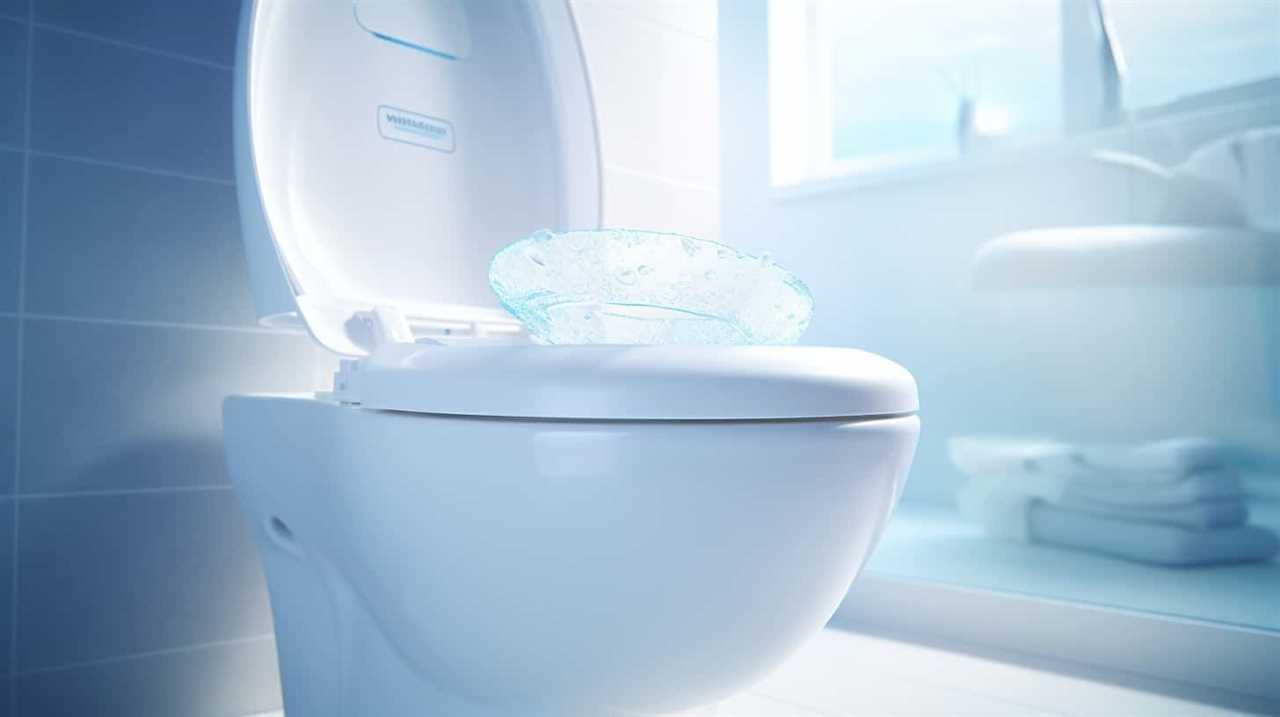
This design has several advantages. Firstly, gravity flush toilets require no additional power source, making them cost-effective and environmentally friendly. Secondly, they’ve fewer moving parts, reducing the chances of mechanical failure.
However, there are some disadvantages to consider. Gravity flush toilets may not be as effective in removing large amounts of waste, and they can be prone to clogging if not used properly. In comparison to other flush systems, such as pressure-assisted or dual-flush toilets, gravity flush toilets are generally quieter and easier to maintain.
Pressure-Assisted Flush
For our toilets, we also consider the option of a pressure-assisted flush system. Pressure-assisted flush toilets use a combination of air and water to create a powerful flush, ensuring efficient waste removal. These toilets have a tank inside the main tank that stores air under pressure. When you flush, the water is released with a burst of air, creating a forceful flush that clears the bowl effectively.
Here is a table outlining the benefits of pressure-assisted flush toilets and how to maintain them:
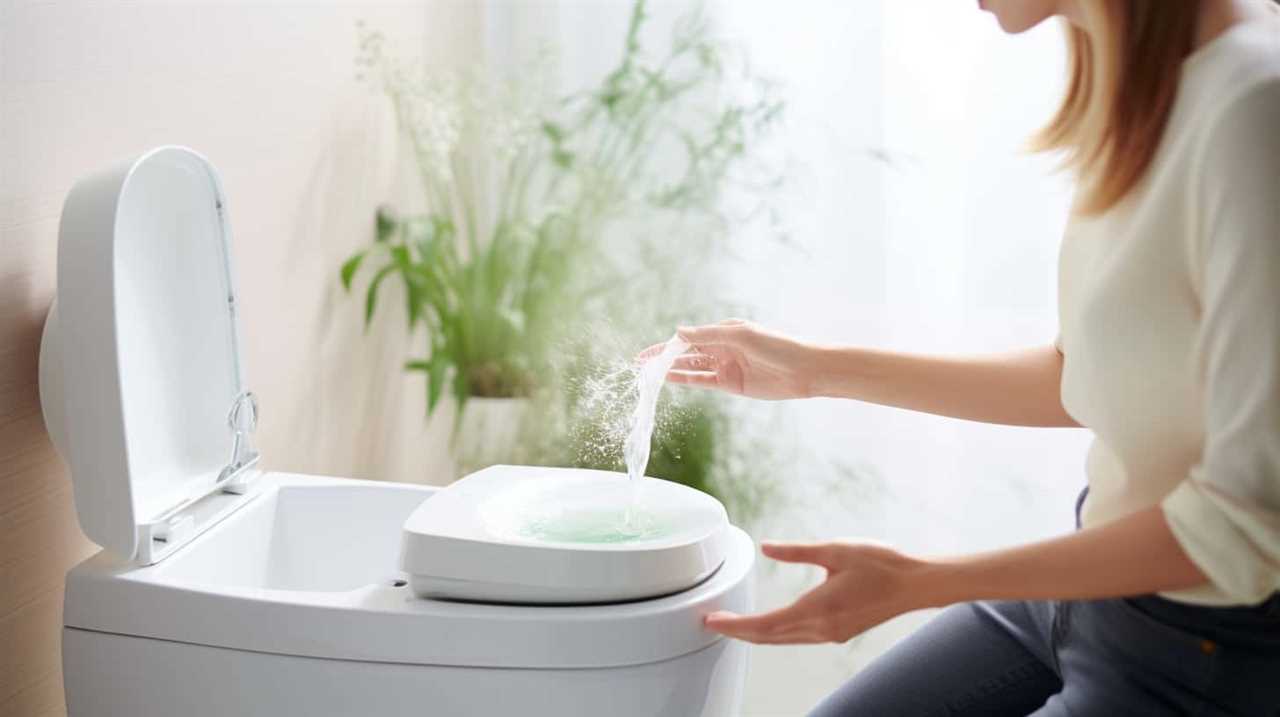
| Benefits | Maintenance |
|---|---|
| 1. Powerful flush for thorough waste removal | 1. Regularly check the pressure-assist tank for leaks |
| 2. Less clogging due to increased flushing power | 2. Clean the bowl and tank regularly to prevent buildup |
| 3. Water-saving feature as it uses less water per flush | 3. Replace any worn-out components, such as the flush handle or cartridge |
| 4. Suitable for commercial and high-traffic areas | 4. Follow the manufacturer’s instructions for maintenance and repairs |
| 5. Efficient and reliable performance | 5. Consider professional help for complex repairs |
Transition: Now that we have explored the benefits and maintenance of pressure-assisted flush toilets, let’s move on to the next type: dual flush.
Dual Flush
Moving on to the next type of flush, let’s explore the benefits and features of a dual flush system.
- Dual flush toilets offer two flushing options: a full flush for solid waste and a half flush for liquid waste. This helps to conserve water and lower water bills.
- They’re eco-friendly, as they use less water compared to traditional toilets. This is especially important in areas with water scarcity or high water costs.
- Dual flush toilets are versatile and can be installed in both residential and commercial settings.
- They come in various designs and styles, allowing you to choose the one that best suits your bathroom aesthetics.
- When choosing a dual flush toilet, consider factors such as water efficiency, ease of cleaning, and durability. Look for models with WaterSense certification for maximum water savings.
Power Flush
One option to consider for a toilet flush is the power flush, which provides a strong and efficient flushing mechanism. Power flush toilets use a pressurized system to forcefully remove waste, ensuring a thorough and powerful flush every time. One advantage of power flush toilets is their ability to handle larger volumes of waste, making them ideal for commercial spaces or households with heavy usage. Additionally, power flush toilets are less prone to clogging due to their forceful flush.
However, there are some disadvantages to consider. Power flush toilets can be noisy and may require more maintenance. When choosing a power flush toilet for your bathroom, consider factors such as water efficiency, noise level, and ease of maintenance.
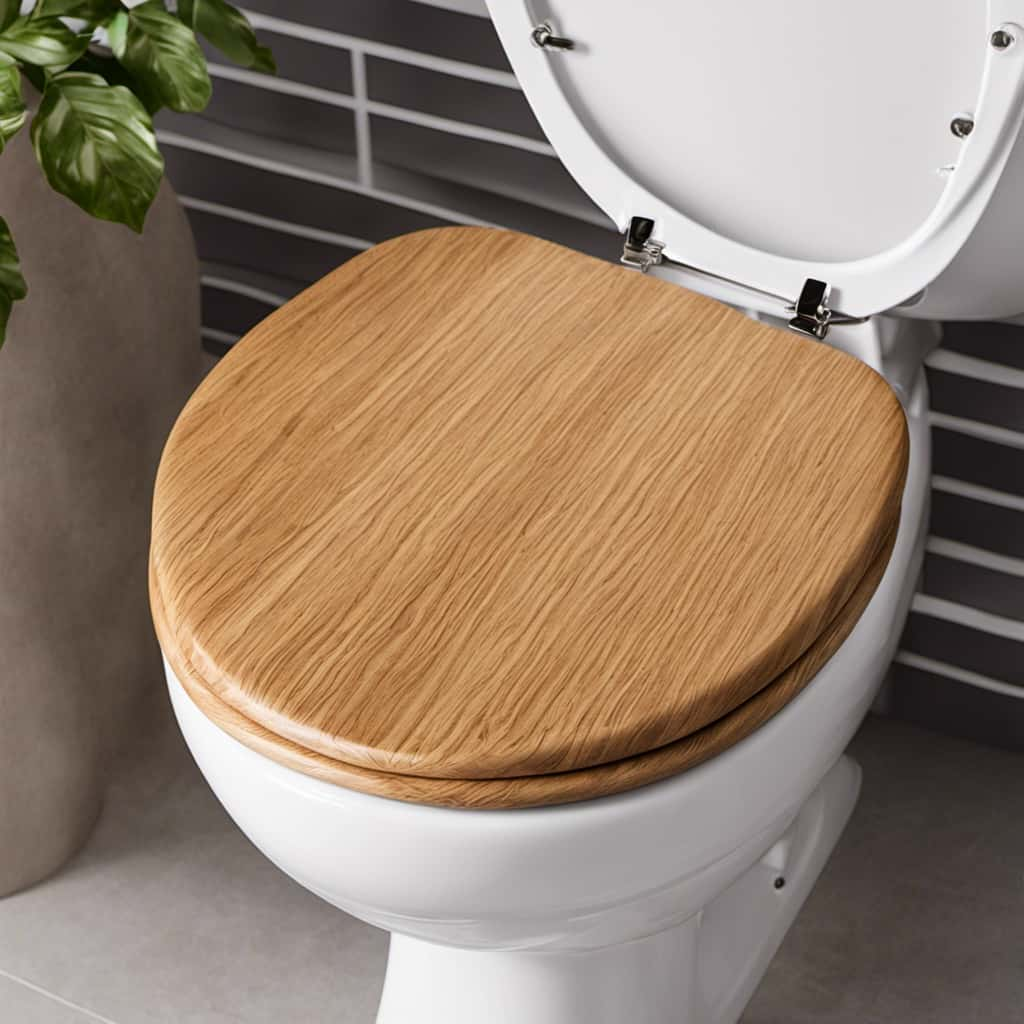
Transitioning to the next section, another option to consider is the water-saving flush.
Water-Saving Flush
Now let’s shift our focus to the water-saving flush, which offers an environmentally-friendly and efficient solution for flushing toilets.
Here are some key benefits of water efficient toilets:
- Conserves water: Water-saving flushes use less water per flush, helping to conserve this precious resource.
- Reduces water bills: By using less water, water-saving flushes can significantly lower water bills over time.
- Environmental impact: Water-efficient toilets help to reduce the strain on water resources and contribute to a more sustainable future.
- Efficient flushing: Despite using less water, water-saving flushes are designed to still effectively remove waste.
- Easy installation: Many water-saving flush systems can be easily retrofitted onto existing toilets, making them a convenient option for homeowners.
Frequently Asked Questions
How Do Gravity Flush Toilets Work?
Gravity flush toilets work by using the force of gravity to create a siphoning effect, which pulls waste and water down the drain. However, they may have disadvantages such as clogging and requiring more water to flush effectively.
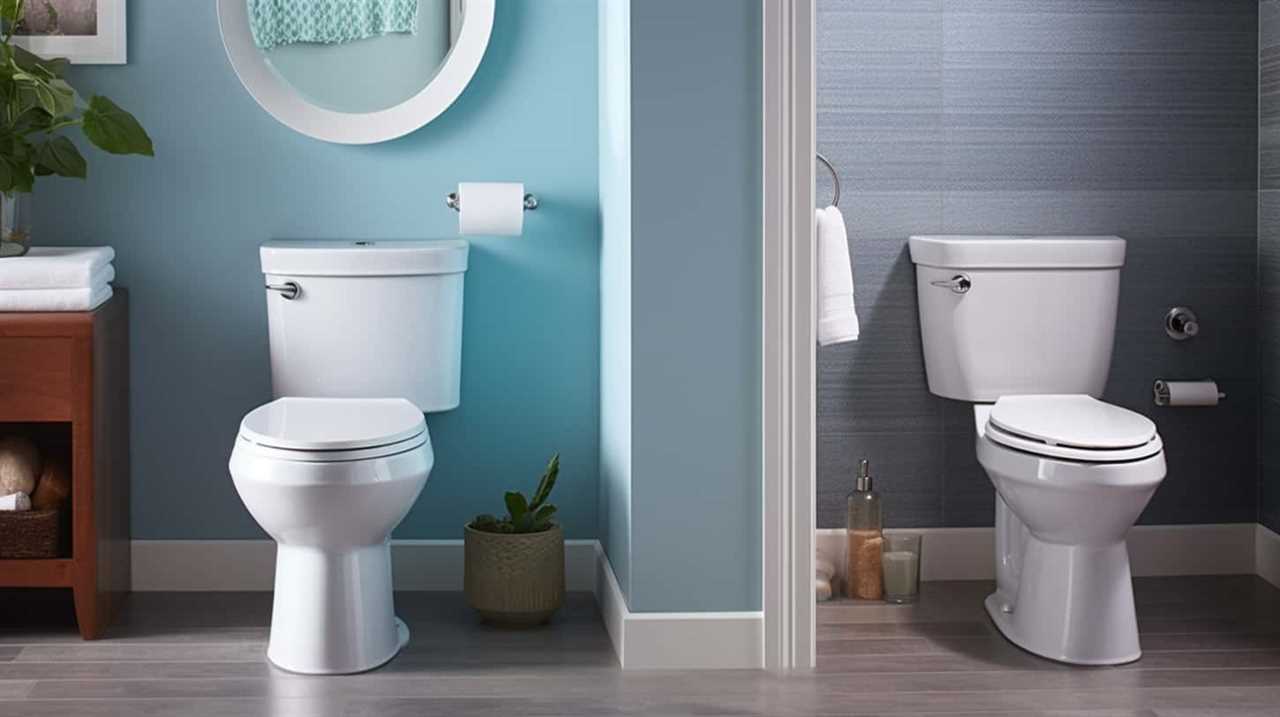
What Are the Advantages of a Pressure-Assisted Flush Toilet?
Pressure-assisted flush toilets have several advantages over gravity flush toilets. They provide a more powerful flush, reducing the chances of clogs and improving overall efficiency. Additionally, they can save water by using less with each flush.
How Does a Dual Flush Toilet Save Water?
A dual flush toilet saves water by offering two flushing options: a lower volume flush for liquid waste and a higher volume flush for solid waste. This allows for effective waste removal while conserving water.
What Is the Difference Between a Power Flush and a Gravity Flush Toilet?
When comparing power flush and gravity flush toilets, we need to consider which is better. Power flush toilets use pressure to clear waste efficiently, while gravity flush toilets rely on gravity. The choice depends on individual needs and preferences.
Can a Water-Saving Flush Toilet Effectively Clean Waste With Less Water?
Water-saving flush toilets are a marvel of efficiency, using less water to clean waste. Their innovative design ensures maximum effectiveness while conserving our precious resources. It’s a win-win for both cleanliness and sustainability!
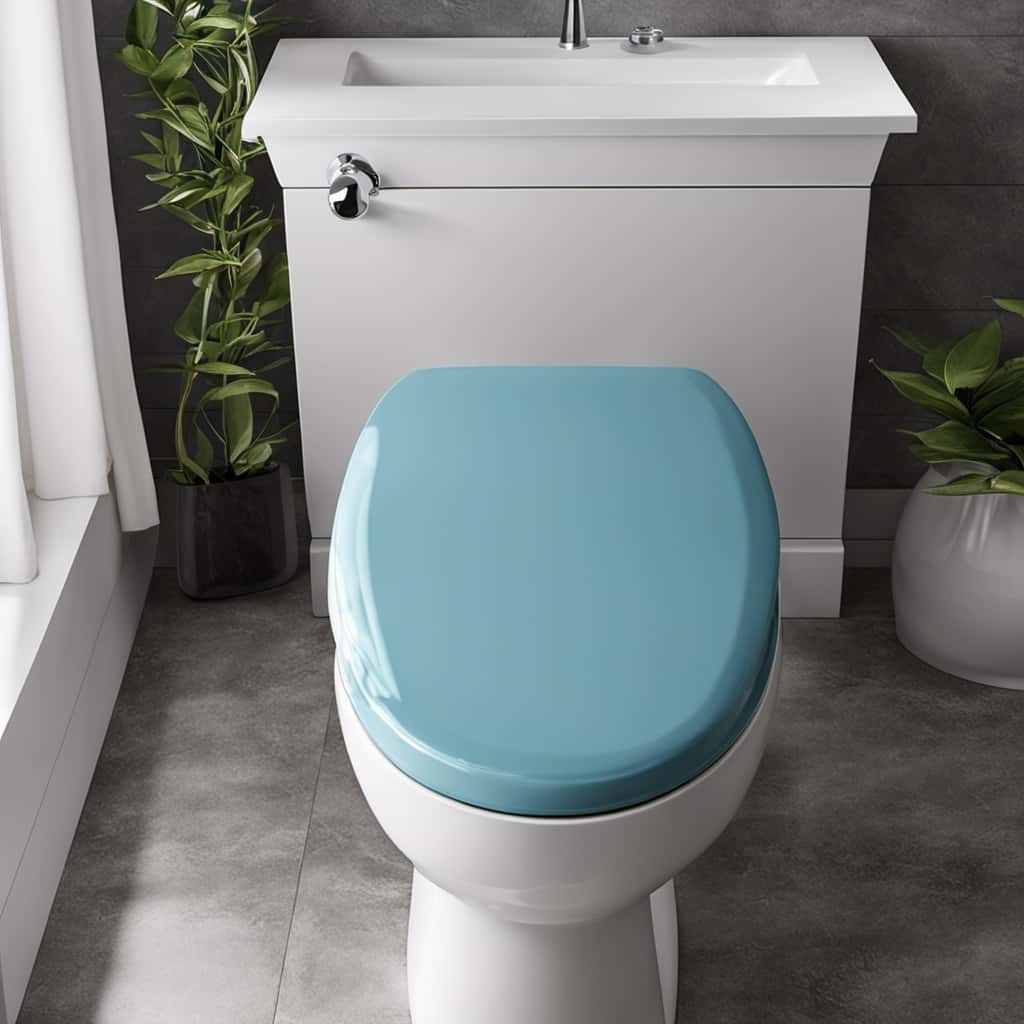
Conclusion
In conclusion, when it comes to choosing the best type of flush for a toilet, it ultimately depends on your specific needs and preferences.
If you’re looking for a powerful flush, a pressure-assisted or power flush might be the best options.
On the other hand, if water conservation is a priority, a dual flush or water-saving flush can be more suitable. For instance, a case study conducted in a residential building showed that implementing dual flush toilets resulted in a significant reduction in water usage without compromising on efficiency.

